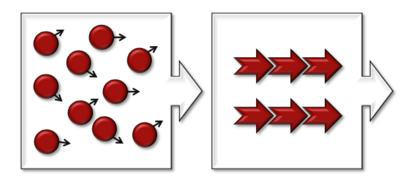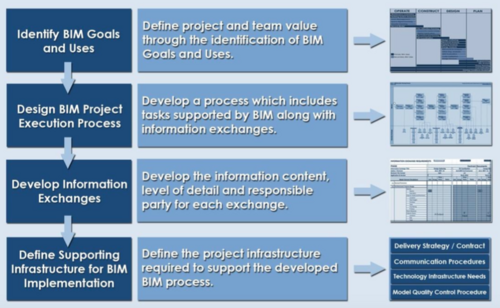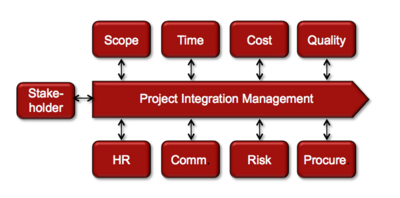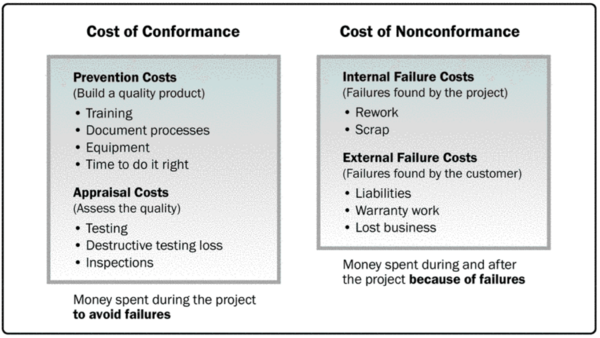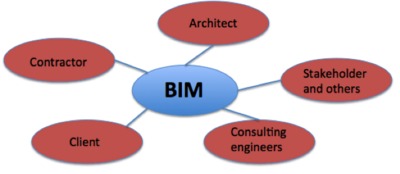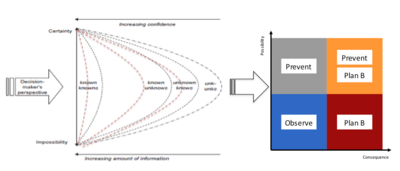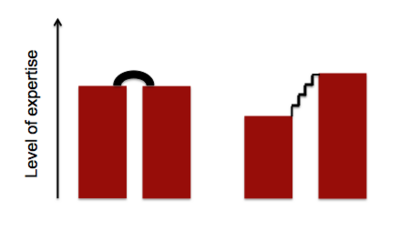BIM as a project management tool on construction projects
(→Annotated bibliography) |
(→Annotated bibliography) |
||
| Line 181: | Line 181: | ||
=Annotated bibliography= | =Annotated bibliography= | ||
:1. Eastman, C.; Tiecholz, P.; Sacks, R.; Liston, K., 2008. "BIM Handbook: a Guide to Building Information Modeling for owners, managers, designers, engineers, and contractors" | :1. Eastman, C.; Tiecholz, P.; Sacks, R.; Liston, K., 2008. "BIM Handbook: a Guide to Building Information Modeling for owners, managers, designers, engineers, and contractors" | ||
| + | ::'''Summary:''' | ||
| + | |||
| + | :2. buildingSMART Finland 2012. “Common BIM Requirements 2012: Management of BIM projects" | ||
| + | ::'''Summary:''' | ||
| + | :3. Alashwal, A. and Fong, P., 2015. ”Empirical Study to Determine Fragmentation of Construction Projects.” | ||
| + | ::'''Summary:''' | ||
| + | :4. The computer integrated construction research program at the Pennsylvania State University 2010 “BIM Project Execution Planning Guide” | ||
| + | ::'''Summary:''' | ||
| + | :5. Bips, Digital constructions 2006. “3D Working Method 2006” | ||
| + | ::'''Summary:''' | ||
| + | :6. ISO21500. 2012. Guidance on Project Management. International Organization for Standardization. | ||
| + | ::'''Summary:''' | ||
| + | :7. 7.0 7.1 Andersson, N. 2015 “BIM-based Management of Construction presentation”, June 2015, DTU | ||
| + | ::'''Summary:''' | ||
| + | :8. Winch, Graham, M., 2010, Managing Construction projects, second edition | ||
| + | ::'''Summary:''' | ||
| + | :9. Smith, D. P. (2014, 27th IPMA World Congress). BIM & 5D Project Cost Manager. | ||
| + | ::'''Summary:''' | ||
| + | :10. Chen, L. and Luo, H., 2014. "A BIM-based construction quality management model" | ||
| + | ::'''Summary:''' | ||
| + | :11. Smith, D. K. 2009. "Building Information Modelling: A strategic implementation guide" | ||
| + | ::'''Summary:''' | ||
| + | :12. Attrup, M. L.; Olsson, J. R. 2008. Power I Projekter Og Portefølje. | ||
| + | ::'''Summary:''' | ||
| + | :13. Hauch, P. 2014. "Measuring profit by using Open BIM – tools from “Det Digitale Byggeri” Presentation" 2014, DTU | ||
| + | ::'''Summary:''' | ||
| + | :14. Jørgensen, E., F., 2014 "Standards and classification of building objects, SfB and CCS presentation, 2014, DTU." | ||
::'''Summary:''' | ::'''Summary:''' | ||
Revision as of 10:40, 25 September 2015
A Building Information Model (BIM) is a digital representation of the physical and functional characteristics of a project. BIM tools are used to develop and share information throughout construction projects. The concept of BIM has existed since the 1970s[1], but has only recently been considered as a fundamental project management tool, due to the many benefits associated with the use of BIM. These benefits have changed the way construction projects are managed, and can be considered a milestone in project management. Despite the benefits, the use of BIM as a project management tool is still in the early stages of development, and there are still many challenges and barriers associated with its use
This article will introduce how Building Information Modelling is used as a project management tool and its underlying practices. Furthermore the different application areas and limitations of BIM will be discussed. The illustration and example will focus on construction projects since the benefits achieved through the use of information modeling are especially heightened in the challenging and diversified construction projects[2].
The implementation of BIM has proven successful in newer projects to address the fragmentation issues, which heavily impacts the efficiency of construction projects. Using BIM as a project management tool has shown to be a promising instrument to address these fragmentation issues and achieve better integration within construction projects.
Contents |
Overview
Background
Application context
The project participants of Construction projects are constantly being challenged to deliver successful and effective projects despite limited resources and tight schedules. Due to this pressure, which is often placed on the project participants, coordination and sharing of information becomes paramount. Construction projects are also heavily impacted by an increasing degree of fragmentation[3]. This fragmentation occurs due to the large number of specialised actors that usually are involved in construction projects working towards a common goal. The need for a large number of specialised actors becomes even more critical, as construction project complexity increases. This also drives an even larger requirement for the integration between the different actors cf. figure XX. BIM is a solution towards these fragmentation issues since it greatly improves the integration of project management.
Utilisation of BIM
Planning and Execution
BIM utilises many benefits throughout construction projects and can be implemented at many phases throughout a project. When implementing BIM, the current technology, training, and costs of implementation relative to added value must always be considered when determining the appropriate areas and levels of detail needed in the information modeling processes. Hence In order to successfully implement BIM, a project team must perform comprehensive and detailed planning in the early stages of a project in order to maximise value while minimising the cost and impact of the modeling implementation [4].
It is important for the project participants to develop a execution plan when implementing BIM, in order to successfully integrate BIM into the project processes. Similar to a project plan, this should be developed in the early stages of a project and must be continually monitored, updated and revised as changes are made to the project or its participants. The planning procedure should consist of four steps as illustrated in figure XX. The four steps consists of identifying the appropriate BIM goals and uses on a project, designing the BIM execution process, defining the BIM deliverables, and identifying the supporting infrastructure to successfully implement the plan [4].
By developing a BIM Plan, the project and project team participants can achieve the following value according to the BIM execution planning guide [4].:
- All parties will clearly understand and communicate the strategic goals for implementing BIM on the project
- Organisations will understand their roles and responsibilities in the implementation
- The team will be able to design an execution process which is well suited for each team member’s business practices and typical organisational workflows
- The plan will outline additional resources, training, or other competencies necessary to successfully implement BIM for the intended uses
- The plan will provide a benchmark for describing the process to future participants who join the project
- The purchasing divisions will be able to define contract language to ensure that all project participants fulfil their obligations.
- The baseline plan will provide a goal for measuring progress throughout the project.
To further enhance cooperation and information sharing throughout the project process, the BIM planning should follow information levels. Information levels correspond to the level of detail in the associated digital representation of a project [5]. Utilising information levels when working with BIM tools, aids towards creating a more structured project, where milestone and phases will be used as assembly points for the different information levels and disciplines. The table below illustrated how the different construction phases are used as assembly points for the required information level across various project disciplines:
| The construction phases | Architect | Structural engineer | Building services engineer | Contractor | Supplier | Client |
|---|---|---|---|---|---|---|
| Design brief | 0 | 0 | 0 | 0 | 0 | |
| Conceptual design | 1 | 1 | ||||
| Preliminary design | 2 | 2 | 2 | 4 | ||
| Scheme design | ||||||
| Detailed design | 4 | 4 | 4 | 5 | ||
| Construction | 5 | 5 | ||||
| As Built | 6 | 6 | 6 | 6 | 6 | |
| Operation and maintenance | 6 |
After implementing BIM into a project, following the executing planning procedure, different disciplines and application areas achieves different advantageous and benefits based on its use.
Application areas
As previously mentioned, construction projects are heavily affected by a high degree of fragmentation, which puts a increasing pressure on new project management tools and practises to increase integration within projects. As stated in ISO-21500 [6], a project can be split into several subject and process groups. Furthermore, according to ISO-21500 "Project management is the application of methods, tools, techniques and competencies to a project. Project management includes the integration of the various phases of the project life cycle", hence, In order to achieve a better degree of Project Integration Management, improvements must be made on the before mentioned subject groups throughout the project life cycle, as illustrated in figure 2 [7]. In order to fully visualise the mentioned benefits and uses of BIM in regards to the project integration issue, one has to focus on each of the subjects groups seen in figure 2.
Use and benefits
Stakeholder
Utilising BIM yields many benefits for both internal and external stakeholders as well as its associated Stakeholder Management. Being able to give an early visualisation gives a better idea of how the building fits into the surroundings and how it will look, greatly benefitting the client and local community. 3D modelling also gives the possibility to document and assess matters such as volume, height and the shading of the building, beneficial for the local authorities. BIM also makes for a faster project, due to the lower amount of defects since errors are discovered sooner and in more detail [5].
Scope
A variety of tools can be used to define and control the scope of the project. 3D modelling provide the means to create an early visualisation of the project, giving the client a better ability to assess whether the project meets the requirements for form and function. The scope of the project also includes the processes required to identify and define the work and deliverables, such as the Work Breakdown Structure (WBS). The WBS can more accurately be documented, since BIM gives a clearer insight in the composition and deliverables of the different building systems such as the architectural, structural, and installation system. Furthermore, by using BIM during the planning phase, when the scope of the project is being established, many conflicts between the client and construction company can be reduced[8], hence reducing the overall project lifecycle.
Time
During construction project, time is managed by creating and controlling scheduling[6]. The necessary activities needed to develop the schedule, comes from breaking down activities into the smallest possible task in order to create the before mentioned Work Breakdown Structure (WBS) [8]. BIM is used both to extract information needed to develop an accurate WBS, but also more efficiently create the chosen scheduling method used such as the Gantt Chart or Location Based Scheduling. Both these types of scheduling is based on the The Critical Path Method (CPM), which is more accurately determined with the use of BIM tools. By being able to more precisely determine the critical path of a project, risks and uncertainties in regards to delays can be reduced or even prevented.
Cost
To illustrate the effect implementing BIM has on Cost management, a 5th dimension must be introduced, namely cost (with time being the 4th). Several costs estimation BIM tools exists such as Sigma etc, which are used to create 5D models. The implementation of 5D models offer benefits in both the construction phase as well as the design phase, since it establishes a more precise cost estimation while creating an easier and more accurate way of controlling the budget [9]. A visualisation of the before mentioned cost estimation with the use of the Product Breakdown Structure(PBS) in the early phases and the Work Breakdown Structure (WBS) in the later phases is shown in figure XX[9].
Quality
The quality management of a project can be broken down into four main components, namely inspection, quality assurance, quality control and total quality management [8]. Clash detection is one of many applications of BIM, which can be used to increase the quality control and assurance of construction projects, while reducing time allocation for inspection hence increasing the total quality management [7]. A BIM model usually consists of several models, which are interdependent of one another. Clash detection works by locating and solving eventual clashes between the different models, while locating clashes and errors which would have otherwise been overlooked. According to an article concerning construction quality management and its applications [10] BIM affects project quality in the following ways:
- Increases efficiency and precision and improves design evaluation and communication;
- Reduces errors due to better coordination between documents and the entire team, thus minimizes conflicts;
- Simulation and optimization can be conducted for better performance, lower costs, and shorter lead times;
- Automatic generation of engineering documents produces precise and consistent information;
- Reduces maintenance costs and time by providing timely and relevant information to facility management (FM) as early as the design stage.
Human resources
The easy information sharing, made possible by the implementation of BIM also effects the human resources of construction projects. Data collection, extractions and communication software makes it possible to create a better overview of the relationsship between the different disciplines, while improving upon the estimation, control and management of human resources during the different phases of a project[11]. The easy flow of information also makes it possible to optimise the resource consumption, whether traditional project management is used or if Lean Project Management is implemented, as illustrated in figure XX.
Communication
Communication in Project Management is a vital part of construction projects. During construction projects, several disciplines and actors have to work together in order to reach a common objective. The tasks and deliverables of these different actors are highly interdependent and therefor require a high degree of cooperation and information sharing. The information flow and communication between the different actors is also highly affected by the integration of BIM, since both these factors are greatly improved by implementing BIM. Using BIM does not only promote a better communication internally within a project, but also strengthen the communication between internal and external factors, such as the stakeholder and client, by early visualisations of the project.
Risk
A series of uncertainties, risk events and sources are associated with construction project, which makes it paramount to collect and share as much information as possible during all phases of a project. The reason why BIM is a necessary and welcome solution in risk management is the fact that it increases the information flow within a project and increases the amount of information available, hence Minimizing Risk and Uncertainties in Construction Projects. BIM can also be used to generate what-if simulations, which can be used to decrease and better control risks during the project lifecycle. Figure XX illustrates how BIM decreases the different types of risks and uncertainties (Known knowns, unknown knowns etc),[8] and how that information can be used to chose the required measure for the project [12].
Procurement
With BIM the pre-construction phases are changed in several ways, which also impacts the procurement. The client will have a better overview of the project and will therefor be able to chose bidders with more confidence, due to 3D visualisation tools and associated data extraction cf. figure XX. Integrating BIM onto the project, will greatly optimise the procurement process, due to the before mentioned cost estimation tools as well as the overall increase in quality. This optimisation of the procurement process, will force suppliers to be more productive and competitive.
Discussion
Limitations
There are many advantages and benefits associated with using BIM as a tool to achieve better and more efficient integration in construction project management. Despite these benefits, difficulties and limitations arise by using BIM. These limitations are specially noticeable during the communication with the different actors and their associated BIM use and level of expertise. These limitations mostly center around the different level of education and experience in using BIM. Having a gap in the educational level of the different BIM users, will create difficulties in communicating between the specilization actors, as illustrated in figure XX.[13].
Another limitation with the use of BIM, originates for the same reason that different languages and units for measurements exists all over the world. When working with BIM, standardisation is the chosen "language" used to measure, extract and share information between different BIM tools. Implementation of a universal classification system is therefor necessary to reach the full utilisation of BIM in project management [14].
Implementation examples
Conclusion
The lack of common education and understanding of the BIM tools and associated deliverables could lead to fragmentation due to a difference in competency levels and classification throughout the project. If BIM is not properly integrated, its use would not have the intended impact and could in fact cause fragmentation and other complications instead of increased integration.
References
- ↑ Eastman, C.; Tiecholz, P.; Sacks, R.; Liston, K., 2008. "BIM Handbook: a Guide to Building Information Modeling for owners, managers, designers, engineers, and contractors"
- ↑ buildingSMART Finland 2012. “Common BIM Requirements 2012: Management of BIM projects"
- ↑ Alashwal, A. and Fong, P., 2015. ”Empirical Study to Determine Fragmentation of Construction Projects.”
- ↑ 4.0 4.1 4.2 The computer integrated construction research program at the Pennsylvania State University 2010 “BIM Project Execution Planning Guide”
- ↑ 5.0 5.1 Bips, Digital constructions 2006. “3D Working Method 2006”
- ↑ 6.0 6.1 ISO21500. 2012. Guidance on Project Management. International Organization for Standardization.
- ↑ 7.0 7.1 Andersson, N. 2015 “BIM-based Management of Construction presentation”, June 2015, DTU
- ↑ 8.0 8.1 8.2 8.3 Winch, Graham, M., 2010, Managing Construction projects, second edition
- ↑ 9.0 9.1 Smith, D. P. (2014, 27th IPMA World Congress). BIM & 5D Project Cost Manager.
- ↑ Chen, L. and Luo, H., 2014. "A BIM-based construction quality management model"
- ↑ Smith, D. K. 2009. "Building Information Modelling: A strategic implementation guide"
- ↑ Attrup, M. L.; Olsson, J. R. 2008. Power I Projekter Og Portefølje.
- ↑ Hauch, P. 2014. "Measuring profit by using Open BIM – tools from “Det Digitale Byggeri” Presentation" 2014, DTU
- ↑ Jørgensen, E., F., 2014 "Standards and classification of building objects, SfB and CCS presentation, 2014, DTU."
Annotated bibliography
- 1. Eastman, C.; Tiecholz, P.; Sacks, R.; Liston, K., 2008. "BIM Handbook: a Guide to Building Information Modeling for owners, managers, designers, engineers, and contractors"
- Summary:
- 2. buildingSMART Finland 2012. “Common BIM Requirements 2012: Management of BIM projects"
- Summary:
- 3. Alashwal, A. and Fong, P., 2015. ”Empirical Study to Determine Fragmentation of Construction Projects.”
- Summary:
- 4. The computer integrated construction research program at the Pennsylvania State University 2010 “BIM Project Execution Planning Guide”
- Summary:
- 5. Bips, Digital constructions 2006. “3D Working Method 2006”
- Summary:
- 6. ISO21500. 2012. Guidance on Project Management. International Organization for Standardization.
- Summary:
- 7. 7.0 7.1 Andersson, N. 2015 “BIM-based Management of Construction presentation”, June 2015, DTU
- Summary:
- 8. Winch, Graham, M., 2010, Managing Construction projects, second edition
- Summary:
- 9. Smith, D. P. (2014, 27th IPMA World Congress). BIM & 5D Project Cost Manager.
- Summary:
- 10. Chen, L. and Luo, H., 2014. "A BIM-based construction quality management model"
- Summary:
- 11. Smith, D. K. 2009. "Building Information Modelling: A strategic implementation guide"
- Summary:
- 12. Attrup, M. L.; Olsson, J. R. 2008. Power I Projekter Og Portefølje.
- Summary:
- 13. Hauch, P. 2014. "Measuring profit by using Open BIM – tools from “Det Digitale Byggeri” Presentation" 2014, DTU
- Summary:
- 14. Jørgensen, E., F., 2014 "Standards and classification of building objects, SfB and CCS presentation, 2014, DTU."
- Summary:
